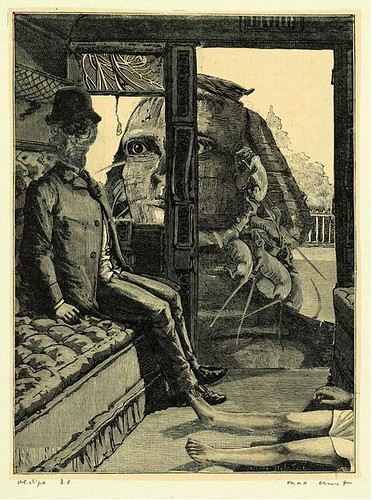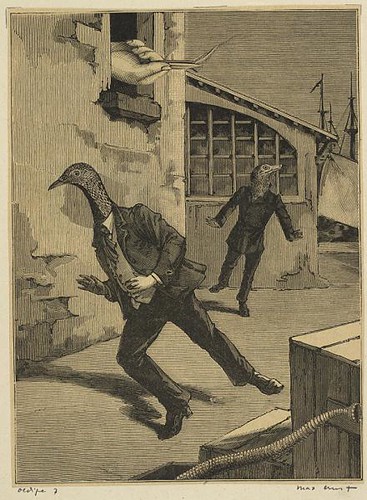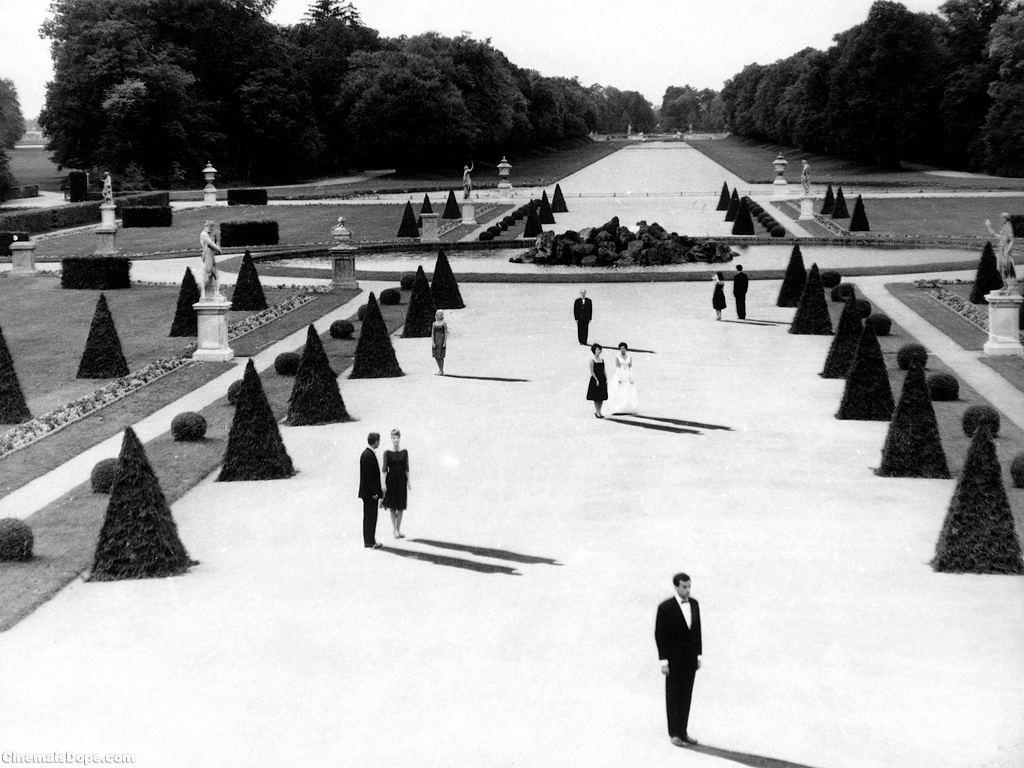It comprises 182 collages that appears to follow some sort of storyline. It seems there are some images missing in between every collage. The reader is confronted to think of steps and events to fill in the gap, to fill in the details. Every time you 'read' the book it's possible to think of a different storyline. The static images become dynamic, it's meaning changes from time to time.
Two things happen:
1. Every single image is multi-interpretable, because there are multiple answers to the question: "What is going on in this image?"
2. The collection of images composed in a structural manner imposes a narrative. Because of the lack of a structure between one image and the other the narrative becomes multi-interpretable.



Another example is the movie Last Year in Marienbad (1961) by Alain Resnais, a somewhat incomprehensible movie featuring a confusing montage technique that actually suits the storyline. A man meets a woman and tells her he is certain he met her before last year and even tells her they had a passionate affair together, while she can't remember and refuses to believe so. The montage is done in a complex manner with a lot of flashback as if it is trying to put the pieces of the puzzle together to find truth.

Last Year in Marienbad turns the "hot" medium that is the film into a "cool" one such as the graphic novel, for the reason the movie requires active conscious participation to extract value.



